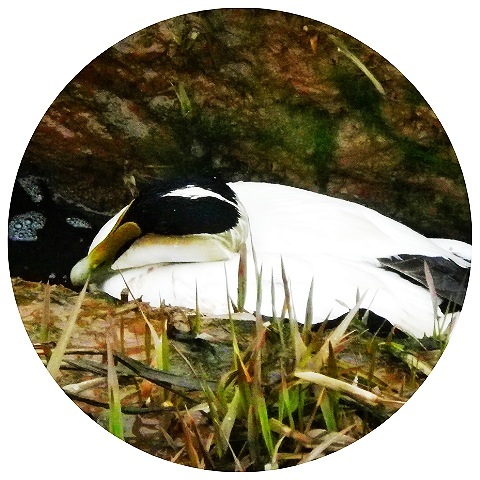Overview
This 49 hectare nature preserve, in two separate parcels, sits partly on the Saints Rest Marsh, one of the largest salt marshes on the Bay of Fundy’s north shore. The area includes a diversity of habitat including salt marsh, coastal mixed forest, rocky shoreline and mudflats. The preserve is situated next to Irving Nature Park, within view of the Nature Trust’s Manawagonish Island Nature Preserve. It is adjacent to New Brunswick Route 1, directly after the Saint John exit from Route 7 along NB Route 1 (Saint John Throughway) 1.6 km west of Saint John.
History
During the last ice age, what is now the Saint John River was a glacier that flowed through Saints Rest Marsh. As the ice melted, rock, sand and gravel deposits were laid down changing its’ route to the Bay of Fundy to the present day outlet at the Reversing Falls.
Prior to the coming of the Loyalists, many parts of what was known then as Acadia had been dyked by the French settlers for farming. These aboiteaux created rich hayfields on what were formerly tidal marshes. At Saint Rests Marsh, sluice gates were located near the end of the present day Irving Nature Park boardwalk into the marsh. Later gravel extraction operations on a nearby beach are said to have weakened these dikes and eventually the Bay of Fundy reclaimed these fertile fields, including part of the preserve, which had been farmed for over two hundred years.
The Carvell family have been involved in farming on Saint John’s west side for at least four generations and at first had a large dairy farm in the Millidgeville area. They are one of Saint John’s early families, with Loyalist and Irish origins, who are remembered for the Carvell Farm and Bayview Farm on Manawagonish Road, which were among the last working farms in the area.
In 1996, Mrs. Lois Carvell Ellis donated 8.9 hectares of marshland to the Nature Trust, which was formerly part of the Carvell Family dairy farm, the last working farm to operate on Saint John’s West side. In continued support of conservation and in honour of her father, F. Gordon Carvell, the Nature Trust acquired an additional 40 hectares belonging to the Carvell Farm in 2013 thanks to the generosity of Mrs. Lois Carvell Ellis, creating the present day Saints Rest Marsh-F. Gordon Carvell Nature Preserve.
Ecology
Saints Rest Marsh is recognized as a Provincially Significant Wetland. The Saints Rest Marsh-F. Gordon Carvell Nature Preserve is in relatively pristine condition, hosting good habitat diversity, including forest, beach, and salt marsh.
The beach, shoreline, and mud flats create highly suitable conditions for shorebirds to nest and feed. There is magnificent bird diversity and is internationally recognized as an Important Bird Area (IBA).Some birds that have been known to frequent the area include the common eider, black duck, American widgeon, savannah sparrow, glossy ibis, great egret, snowy egret, and much more.
The most common plant on the property is the Salt Marsh Cord Grass. A sedge and sweet grass mix can be found along the shore. Seaside goldenrod and New York aster can be found more inland. Samphire, sea-blite, goosetongue, and Arrow-grass are found scattered throughout the marsh.
There is a mixed coniferous and deciduous forest which dominates the largest portion of the property. It is of medium age (approx. 30 to 50 years old) and provides an important buffer between the nutrient-rich mud-flats and the highway.
Access and Activities
The first section of the preserve is primarily marshland and can be accessed by foot from the Saint John Visitor Information Centre. The second larger and more forested portion of the Preserve can be accessed, with approval from the Nature Trust office, by vehicle from a gated pipeline access road beside the King William Road commuter parking lot (at the Spruce Lake Industrial Park sign) or on foot, a 2 km walk to the trail entrance.
Both portions of the preserve can be viewed from the Bay of Fundy side from the Irving Nature Park boardwalk. This area has long been known as an important birdwatching site.
*The property is undeveloped and there are a variety of hazards and risks associated with accessing this preserve. While this nature preserve is open for public access, visitors must assume responsibility for their own actions and safety and are to use the land at their own risk.


